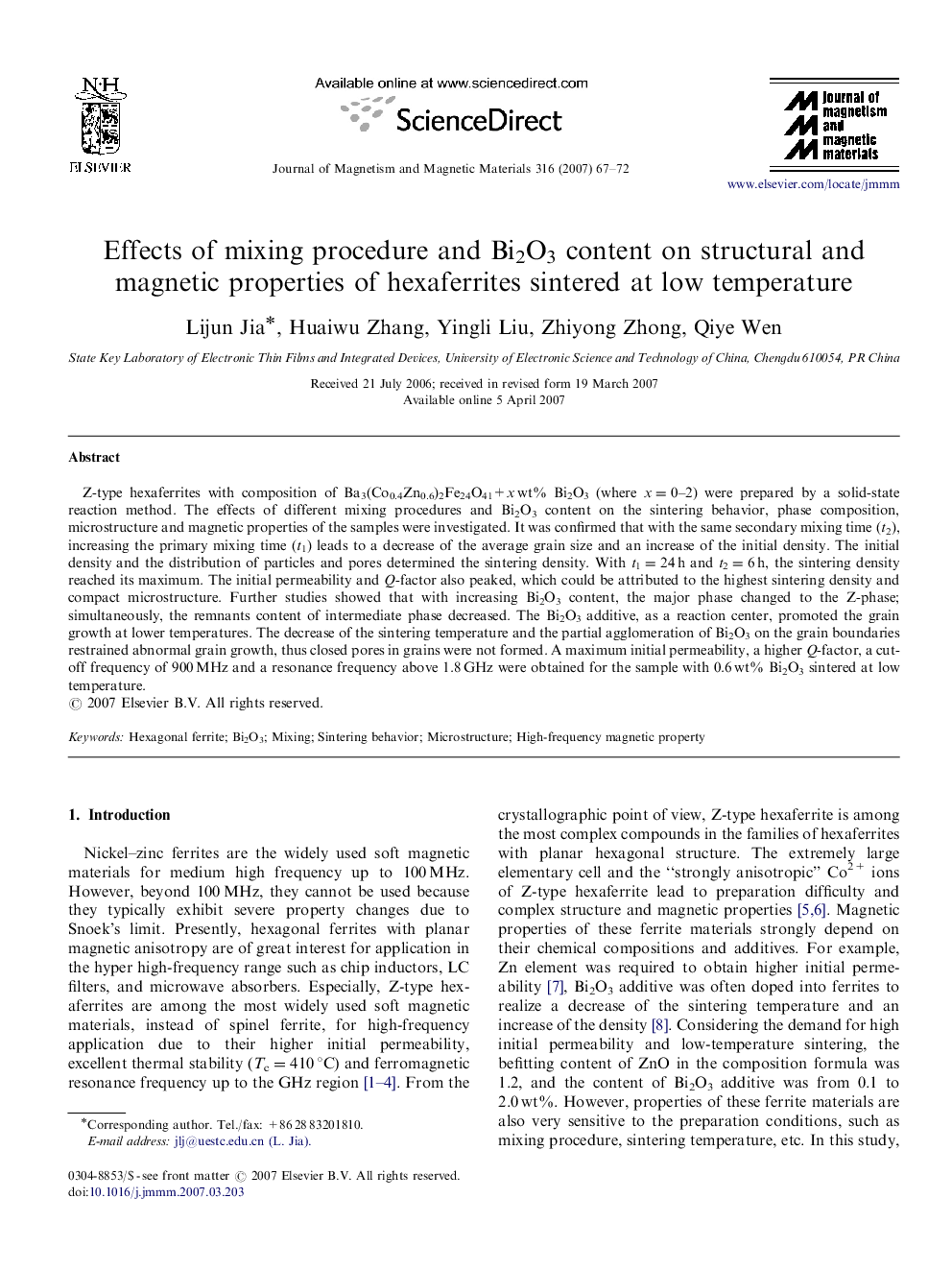| Article ID | Journal | Published Year | Pages | File Type |
|---|---|---|---|---|
| 1804251 | Journal of Magnetism and Magnetic Materials | 2007 | 6 Pages |
Z-type hexaferrites with composition of Ba3(Co0.4Zn0.6)2Fe24O41+x wt% Bi2O3 (where x=0–2) were prepared by a solid-state reaction method. The effects of different mixing procedures and Bi2O3 content on the sintering behavior, phase composition, microstructure and magnetic properties of the samples were investigated. It was confirmed that with the same secondary mixing time (t2), increasing the primary mixing time (t1) leads to a decrease of the average grain size and an increase of the initial density. The initial density and the distribution of particles and pores determined the sintering density. With t1=24 h and t2=6 h, the sintering density reached its maximum. The initial permeability and Q-factor also peaked, which could be attributed to the highest sintering density and compact microstructure. Further studies showed that with increasing Bi2O3 content, the major phase changed to the Z-phase; simultaneously, the remnants content of intermediate phase decreased. The Bi2O3 additive, as a reaction center, promoted the grain growth at lower temperatures. The decrease of the sintering temperature and the partial agglomeration of Bi2O3 on the grain boundaries restrained abnormal grain growth, thus closed pores in grains were not formed. A maximum initial permeability, a higher Q-factor, a cut-off frequency of 900 MHz and a resonance frequency above 1.8 GHz were obtained for the sample with 0.6 wt% Bi2O3 sintered at low temperature.
